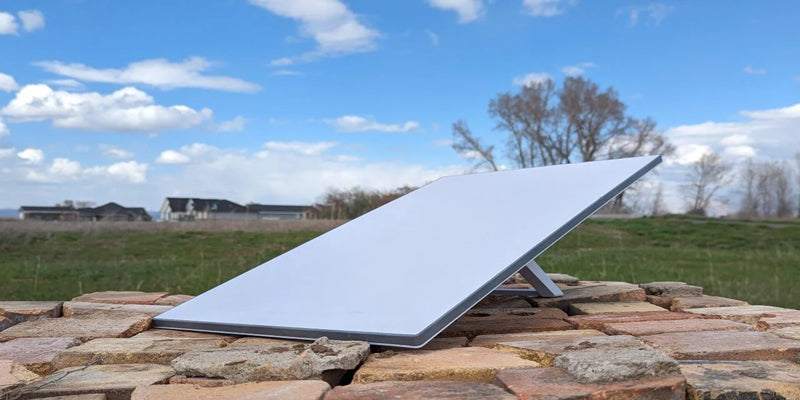
What are the most common problems with Starlink and How to Fix them
Share
Starlink, the leading Satellite Internet provider, is an important game changer for anyone who lives in areas where high-speed Internet options are limited or nonexistent. Even after several years, the technology is still relatively new. It relies also on communicating with far-off minisatellites. As you might imagine, there are bound to be some problems. We will look at Starlink's problems in this guide and show you how to fix them(most common problems with Starlink)
Problem 1: Starlink Offline: Complete loss of Starlink signal
Starlink is not working? There are a number of things that can be the cause. These are some of the most common causes:
Is Starlink down ?
Before you jump through hoops, make sure your problem isn't part of a larger network issue. Visit the unofficial Starlink Status site, or Down Detector.
Are your router and dish properly connected ?
I recently had a problem where I couldn't receive any signal, and it seemed like my dish didn't respond. The cable of my dish had become unseated even though at first it didn't seem like it. It was a windy day, so I'm sure that caused the cord wiggle.
Also, make sure you check your cable connection! Reconnect the router and both the dish base. If the problem is resolved, you can be sure that this was your issue.
Weather could be the problem
Starlink, while less susceptible to weather than satellite services in general, is not weatherproof. The signal can be disrupted when heavy rain falls, though it generally handles light rain and mist well. Snowy weather could also cause problems. Starlink has a built-in heating system, but in cold weather it may struggle. Snow will accumulate and interfere the signal.
If it's snowing but you can reach your dishy physically, gently removing snow with a brush may restore the signal.The only way to deal with heavy rains is to wait.
The position of your Starlink dish could be the issue
If you reside in an area that has a lot of obstructions, for example heavily wooded regions, you might have frequent issues with signal.You can check obstructions by downloading the Starlink app.

After logging in, go to Obstructions and you'll see the 3D image of your dishy's view the sky.Anything blue is clear while red bits indicate obstructions.You can also check manually for obstructions using the Check for Obstructions button.This will utilize the camera of your phone.Starlink will determine if there are any issues by pointing and shifting it around.
The router or dish could just be having a temporary issue
Software glitches are sometimes responsible for serious Stalink issues like a signal loss.You can also try these other solutions if the problem doesn't resolve itself.
- Ensure your software/firmware is on the correct version
- Restart the router.Even if you have the latest software, restarting both your router and dish may solve odd quirks Reboot Router is located under Settings. Slide the toggle to restart.It is not recommended to unplug the power cable while it is on. This can cause damage.
- Then, reboot your Starilnk Dish.Click on the Starlink Tab at the top of the Settings Tab. Now you will see a Slide to Reboot Option.It will restart if you use the slider.
Check the bottom of your router, there might be communication issues

The router is not communicating well with the dish if the light on the router is red. The problem could be caused by a number of things, such as a cable or hardware issue.For those who have square dishes, like me, the dish and router are connected by a proprietary cable.Starlink will send you a replacement cable if the cable breaks for reasons outside your control.If you do need to replace the cable, it costs $69.99 for 75 feet or $89.99 if it is 150 feet.
Starlink may be able to help if you cannot identify the issue or fix it yourself.You'll need to remember that there isn't a simple number you can call.Starlink support is available via the Starlink App or Starlink Support Page.
Problem 2: Starlink’s speed is slower than normal

Your Starlink connection is slowing down. If you've noticed that your Starlink connection is slowing down, you are not the only one. Oversubscription is the main cause of a slowdown. This means that there are too many users in your area. This is a difficult issue to solve. Upgrades to the Business plan are available for those with the Residential (Standard Plan), but they will cost $250 per month. Starlink Roam users have the option to temporarily activate priority data. However, it costs $2 per GB.
It's important to verify that the network congestion is the real problem before you spend any more money or give up. Other Starlink plans might not improve the situation. Follow these steps to do this:
- Click on Speed Test in the Starlink App. The app will analyze and report on any problems it finds. It will attribute it to traffic congestion if it is during peak usage and there are no other issues.
- If it's not during a peak usage period, try performing a reset. To reset the dish, go to Settings > Starlink > Slide to Restart. Additionally, restart the router by navigating to Settings > Router > Reboot Router.
Starlink customer service should be contacted if you still have problems after following these steps. The issue could be caused by faulty equipment or temporary network problems.
Starlink customer can help you identify the exact cause of slowdowns and will guide you towards a resolution. You may be experiencing a slowdown due to faulty hardware, temporary network issues or other issues.
Problem 3: Starlink WiFi connection is completely unavailable

Can’t detect a Wi-Fi connection at all? Your router might be the culprit. Here are the steps to troubleshoot the issue:
- Check the Power: Ensure that your router is powered. Turn the Starlink official router upside down if you're using it. If it is powered on, a small white light will appear. If the light is not on, make sure the cables are connected correctly and that the outlet, as well as any surge protector, are working properly.
- No power? Try plugging in the router to another outlet if there is no power from the outlet. This will rule out any electrical issues. If both the surge protector and outlet are working and the cables are connected properly, then the problem could be the router, or a damaged cable. In this situation, it is best to contact customer service.
- Router has power, but it's not working: If your router has power, but isn't working correctly, try restarting it. Reboot the router by going to Settings > Router. This simple step may resolve the problem. You'll have to contact customer service if the problem persists. You may have to buy a new router depending on whether your hardware is still under warranty.
